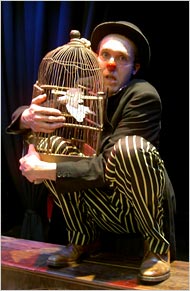The question that we tackle on this blog focuses on what is physical theatre and whether it can be represented in other theatrical forms. In order to discuss what physical theatre is, we must delve into the history and origins of physical theatre.
So what is physical theatre? In definition physical theatre is an expression through movement.
Why was it created? Some theatre companies tried to create a more physical based type of theatre. They wanted to go against the realistic and naturalistic drama to create a physically energetic visual theatre with more choreography and imagery.
Physical theatre as we know it has been speculated to have many different origins. One very prominent influence on physical theatre is mine and theatrical clowning schools, such as L’Ecole internationale de Theatre Jacques Lecoq. Jacques Lecoq and Philippe Gaulier with companies like Theatre de Complicite used their unique theatrical background and apply it to classical texts. Steven Berkoff and John Wright with other practitioners who use this particular approach to physical theatre also received their initial training in intuitions such as Jacques Lecoq’s school.
Another strong influence on modern physical theatre is contemporary dance. So why did dance become an influence on physical theatre? Well physical theatre requires their actors to have a certain amount of physical control and flexibility. Such qualities are not found in regular stage actors so some modern physical theatre companies teach dance methods. This cross-over of dance and theatre are continuously explored by companies such as DV8 inspired by the work of Pina Bausch.
As for the question, what is physical theatre, the definition I personally think is a very appropriate one as it does not restrict the ever changing and evolving genre which finds influences in all types of theatrical and physical forms. Dance, acting, acrobatics and martial arts approaches are just the tip of the iceberg in this exploration of movement.
By Andrea Romero

